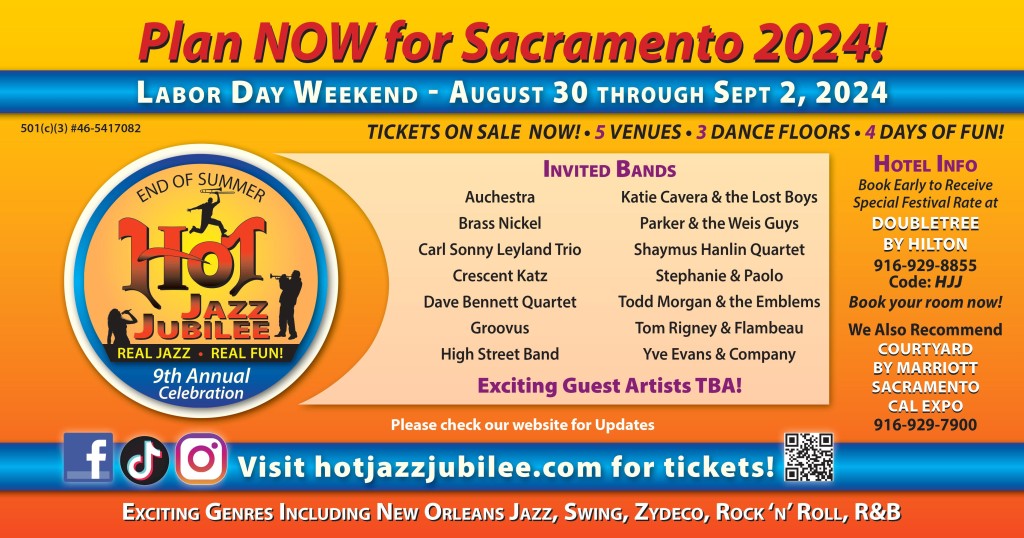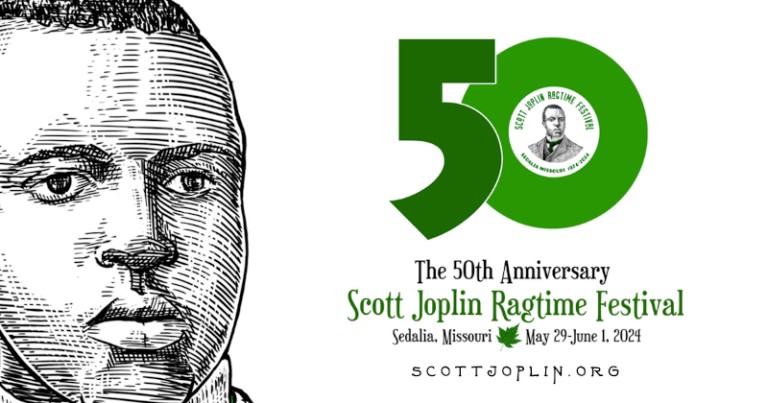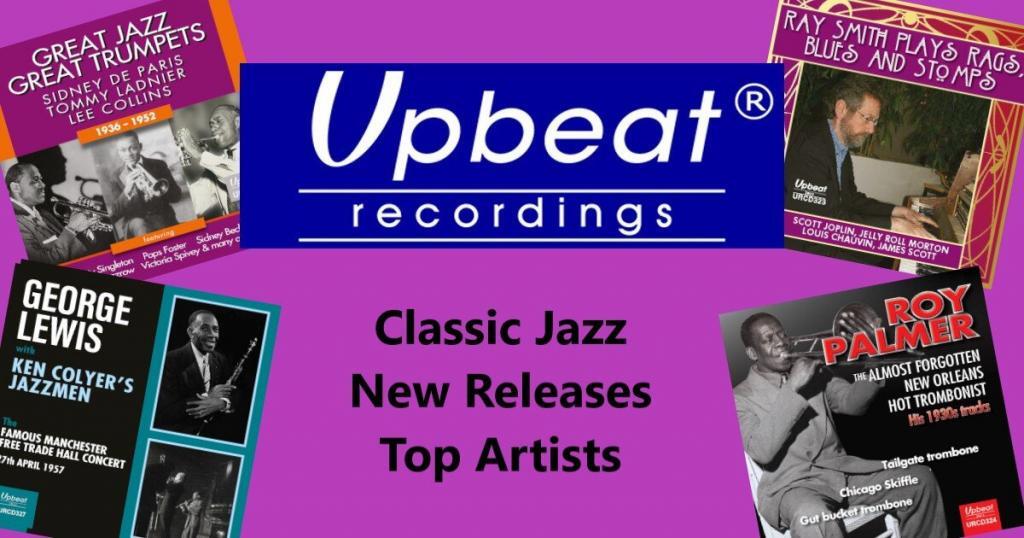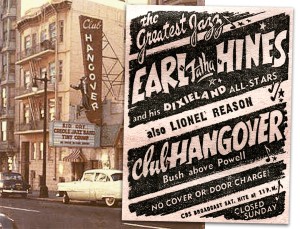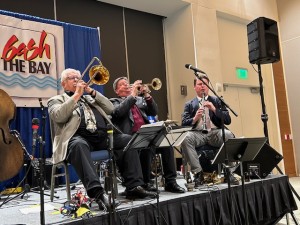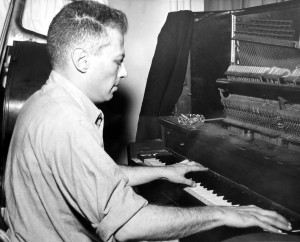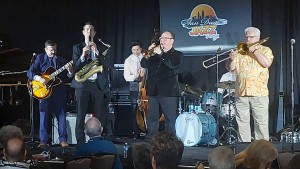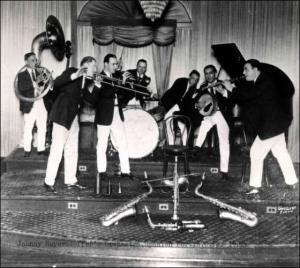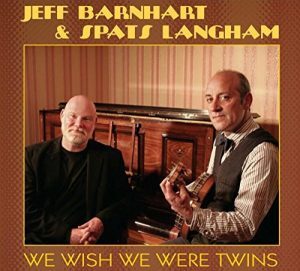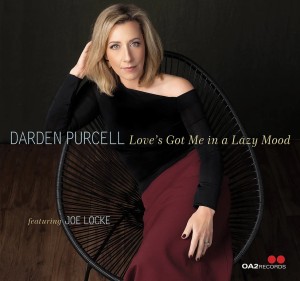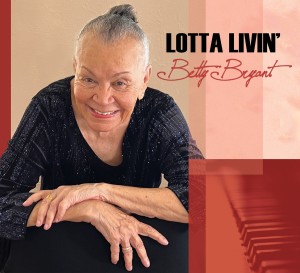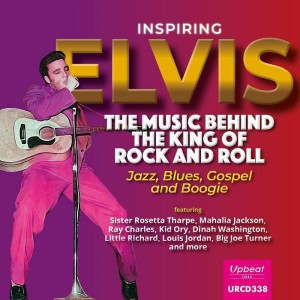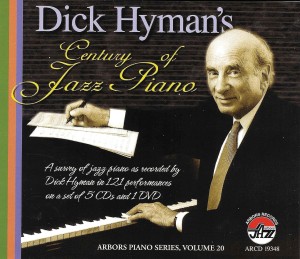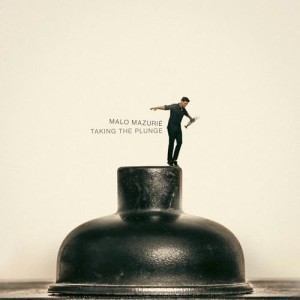 Set forth below is the fortieth “Texas Shout” column. The concluding portion of a two-part essay, it first appeared in the July 1993 issue of West Coast Rag, now The Syncopated Times. Part One may be read HERE.
Set forth below is the fortieth “Texas Shout” column. The concluding portion of a two-part essay, it first appeared in the July 1993 issue of West Coast Rag, now The Syncopated Times. Part One may be read HERE.
The original article included a few paragraphs reviewing an audiocassette by Igor’s Jazz Cowboys which my friends Igor and Barbara Glenn had dropped off during one of their visits to my home. Seeing no point in discussing at length a recording released in 1993, such material has been tacitly deleted from this reprint, thereby causing a slight reshuffling of the remaining text.
This deletion gives me a little space to underscore the point made in the opening installment of this column. In my view, music not played in jazz time is not jazz.
Jazzmen frequently, and rightly, pick and choose from various sources when putting together performances, their goal being to produce a result that is, on the whole, esthetically pleasing. If the ride predominantly consists of jazz, most of us are satisfied to consider all of it as jazz, a harmless enough conclusion.
However, if we want to gain a comprehensive knowledge of our music, we should recognize that such a rendition may, for good reason, contain non-jazz elements. For example, when a Dixieland band renders “St. Louis Blues” and, quite properly, plays the second strain with its usual Latin rhythm, let’s understand that the combo has, for those few bars at least, stopped playing jazz and been playing jazzy Latin music. (To emphasize this point, note that if the identical passage appeared in a version of “St. Louis Blues” that was in Latin rhythm from beginning to end, no one would consider the second strain to have suddenly turned into jazz.)
To recap, we have concluded that neither western swing nor Spanish tinge can properly be called Dixieland or swing, even though both forms of music incorporate jazzy elements. Having reached that conclusion, we can see all the shouting in proper perspective regarding the presentation at jazz festivals of western swing and Spanish-tinged combos, specifically Igor’s Jazz Cowboys (representing western swing) and Paco Gatsby (Spanish tinge).
On the one hand, we have fans who are unhappy about attending festivals that claim to emphasize older-style jazz only to discover that there are bands on the bill that don’t play it. On the other hand, we have fans who (1) respond to the jazzy parts of the two musics, (2) recognize that each shares common characteristics with Dixieland and swing, (3) observe that other non-jazz musics which also share common characteristics with Dixieland and swing (such as ragtime or ordinary popular music of the twenties and thirties) have for years been regularly presented at older-style jazz festivals without complaint, and (4) wonder what all the fuss is about.
Personally, I have no problem with Dixieland festivals hiring non-Dixieland bands that play music having common characteristics with Dixieland. Further, I’m not about to criticize festival producers for booking acts that a significant proportion of their patrons wants to see. All I ask is that the music be properly described in the program and publicity, so that a newcomer sitting in front of a country/western, blues, swing, ragtime or other non-Dixieland band will know what he’s hearing and won’t think it’s Dixieland.
When I’m at a festival where Igor shares the bill, Nancy and I usually drop in, say “Hello” and hear a few tunes. His music is not our first choice, but we recognize a well-organized, high-energy performance when we see one. When we leave, we can readily understand why the room is packed.
Actually, the debate between the “purists” and the broader-based jazz fans is, in today’s scene, dwarfed by the fact that many festivals calling themselves “jazz” or “Dixieland” festivals are supported in large part by folks who have no commitment whatsoever to Dixieland, swing or any kind of jazz – people who, when they get there, often make sure to avoid the jazziest artists. This situation portends grave implications for the future of our music; I have previously covered it in a separate column (see “Texas Shout” for November 1990, dealing with non-genre music on festival programs).
Are you unhappy about the direction the festival scene has taken in recent years? If so, there are some things you can do to reduce your blood pressure when the topic comes up.
First and foremost, you can make a point of letting festival producers know exactly which bands you want to see. Doing so is particularly important today, when transportation costs for some bands may exceed all their other costs put together.
Many festival producers, if not given any other help, are going to confine themselves to bands that are proven attractions or are located reasonably close by. Before producers commit to making the transportation investment required to bring in Band A, they need to have reassurance that there are fans who will attend the festival when Band A is on the bill.
If Band A is one of your favorites, you simply must, in current circumstances, take the trouble to go to bat for it at every opportunity. Further, you should be sure to attend the festival if Band A is booked, and urge your friends to go along.
Next, if a festival doesn’t have enough bands on the lineup to keep you occupied for the full weekend, don’t get upset. Just cross it off your itinerary for that year and drop the producers a line to tell them why you’re doing so.
Let’s face it. The landscape is dotted with music festivals, covering everything from classical to heavy metal, that you aren’t going to attend. What real difference does it make if times change in a way that adds a few more to that list?
If you find yourself at a festival where the biggest crowds flock to bands you don’t like, look at the bright side. Yes, I know that seeing all those people cheering a band you can’t stand appears to be an implied insult to your personal taste. However, you might be thankful that the producers are broad-based enough to book bands you like even though your choices may not always draw as well as some of the headliners.
Also, you might be thankful that the venues with the loud, cheering crowds and the long lines at the door aren’t the ones you’re planning to visit. After all, most large festivals are going to have some bands you won’t have time to see. As long as you’re not going to see them anyway, what do you care about the kind of music that they play?
Moreover, why shouldn’t the bands you’re missing be very popular bands? If they are, their popularity attracts paying customers who help subsidize the hiring of your favorite artists.
Finally, if you are sufficiently concerned and have the time, you could become involved in some aspect of festival production in your area. Make yourself available for one of the volunteer positions, try to gain an understanding of the business/economic elements of running a festival, and strive to reach a point at which you can have some hand in the decision-making process.
In any event, don’t blame the bands for being popular. They are doing exactly what they’ve been hired to do, and what the audience attending their shows expects them to do.
When Frankie Laine takes the stage at Sacramento, the crowd wants him to sing “Mule Train” and his other hits, not haul out a trombone and try to play tailgate (which he won’t be able to do as well, probably, as many other musicians at the festival). Producers hire western swing bands like Igor’s Jazz Cowboys, and Spanish-tinged combos like Paco Gatsby, to do the acts for which they have become well-known; it is absurd for “jazz police” or anyone else to urge such performers to behave otherwise.
My show consists of ragtime and Dixieland jazz. If I ever get hired to play the Strauss waltz festival, or the bagpipe festival, or the Gregorian chant festival, what the audience is going to get during my portion, like it or not, is ragtime and Dixieland jazz. If my act proves to be really popular, and I become a big name on the Strauss waltz/bagpipe/Gregorian circuit, I suppose many purist fans of those musics are going to be unhappy and complain about me in their official periodicals.
However, what am I then supposed to do when the next Strauss festival producer wants to hire me? Refuse the gig? Try to become a Strauss expert and deliver something I wasn’t hired to do?
Now ask yourself how those questions apply to Igor’s Jazz Cowboys and Paco Gatsby. Maybe then you’ll feel more comfortable about putting the subject out of your mind and tossing another of your favorite Dixieland albums on the record player.

The full run of “Texas Shout” has been collected into a lavishly illustrated trade paperback entitled Texas Shout: How Dixieland Jazz Works. This book is available @ $20.00 plus $2.95 shipping from Tex Wyndham, On request, Tex will autograph the book and add a personalized note (be sure to tell him to whom the note should be addressed).
Tex Wyndham’s 3 CD Guide to Dixieland with music and commentary is available for $20 plus $2.95 shipping. The separate CD, A History of Ragtime: Tex Wyndham Live At Santa Rosa, is available for $13.00 plus $2.00 shipping. On request, Tex will autograph the inner sleeve and add a personalized note (be sure to tell him to whom the note should be addressed).
Send payment to Tex Wyndham, P.O. Box 831, Mendenhall, PA 19357, Phone (610) 388-6330.
Note: All links, pictures, videos or graphics accompanying the Shouts were added at the discretion of the Syncopated Times editorial staff. They did not accompany the original columns and do not necessarily reflect the opinion of Tex Wyndham.
